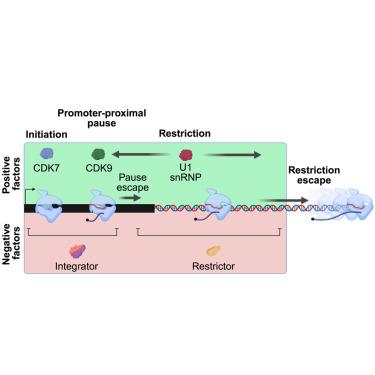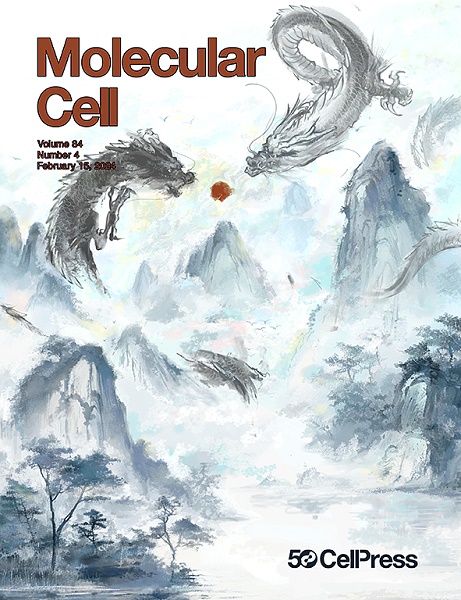Sequential verification of transcription by Integrator and Restrictor
IF 16.6
1区 生物学
Q1 BIOCHEMISTRY & MOLECULAR BIOLOGY
引用次数: 0
Abstract
The decision between productive elongation and premature termination of promoter-proximal RNA polymerase II (RNAPII) is fundamental to metazoan gene regulation. Integrator and Restrictor complexes are implicated in promoter-proximal termination, but why metazoans utilize two complexes and how they are coordinated remains unknown. Here, we show that Integrator and Restrictor act sequentially to monitor distinct stages of transcription. Integrator predominantly engages with promoter-proximally paused RNAPII to trigger premature termination, which is prevented by cyclin-dependent kinase 7/9 activity. After pause release, RNAPII enters a “restriction zone”—universally imposed by Restrictor. Unproductive RNAPII terminates within this zone, while progression through it is promoted by U1 small nuclear ribonucleoprotein particles (snRNPs), which antagonize Integrator and Restrictor in a U1-70K-dependent manner. These findings reveal the principles of a sequential verification mechanism governing the balance between productive and attenuated transcription, rationalizing the necessity of Integrator and Restrictor complexes in metazoans.

积分器和限流器对转录进行顺序验证
启动子-近端RNA聚合酶II (RNAPII)的生产伸长和过早终止之间的决定是后生动物基因调控的基础。整合者和限制者复合体与启动子-近端终止有关,但为什么后生动物利用这两种复合体以及它们如何协调仍然未知。在这里,我们展示了整合子和限制子依次监测转录的不同阶段。整合子主要与启动子近端暂停的RNAPII结合以触发过早终止,这可以通过周期蛋白依赖性激酶7/9活性来阻止。暂停释放后,RNAPII进入一个“限制区”——由Restrictor普遍施加。非生产性RNAPII终止于该区域,而通过该区域的进展是由U1小核核糖核蛋白颗粒(snRNPs)促进的,snRNPs以U1- 70k依赖的方式拮抗Integrator和Restrictor。这些发现揭示了控制高产转录和弱转录之间平衡的顺序验证机制的原理,合理化了后生动物中整合者和限制者复合体的必要性。
本文章由计算机程序翻译,如有差异,请以英文原文为准。
求助全文
约1分钟内获得全文
求助全文
来源期刊

Molecular Cell
生物-生化与分子生物学
CiteScore
26.00
自引率
3.80%
发文量
389
审稿时长
1 months
期刊介绍:
Molecular Cell is a companion to Cell, the leading journal of biology and the highest-impact journal in the world. Launched in December 1997 and published monthly. Molecular Cell is dedicated to publishing cutting-edge research in molecular biology, focusing on fundamental cellular processes. The journal encompasses a wide range of topics, including DNA replication, recombination, and repair; Chromatin biology and genome organization; Transcription; RNA processing and decay; Non-coding RNA function; Translation; Protein folding, modification, and quality control; Signal transduction pathways; Cell cycle and checkpoints; Cell death; Autophagy; Metabolism.
 求助内容:
求助内容: 应助结果提醒方式:
应助结果提醒方式:


